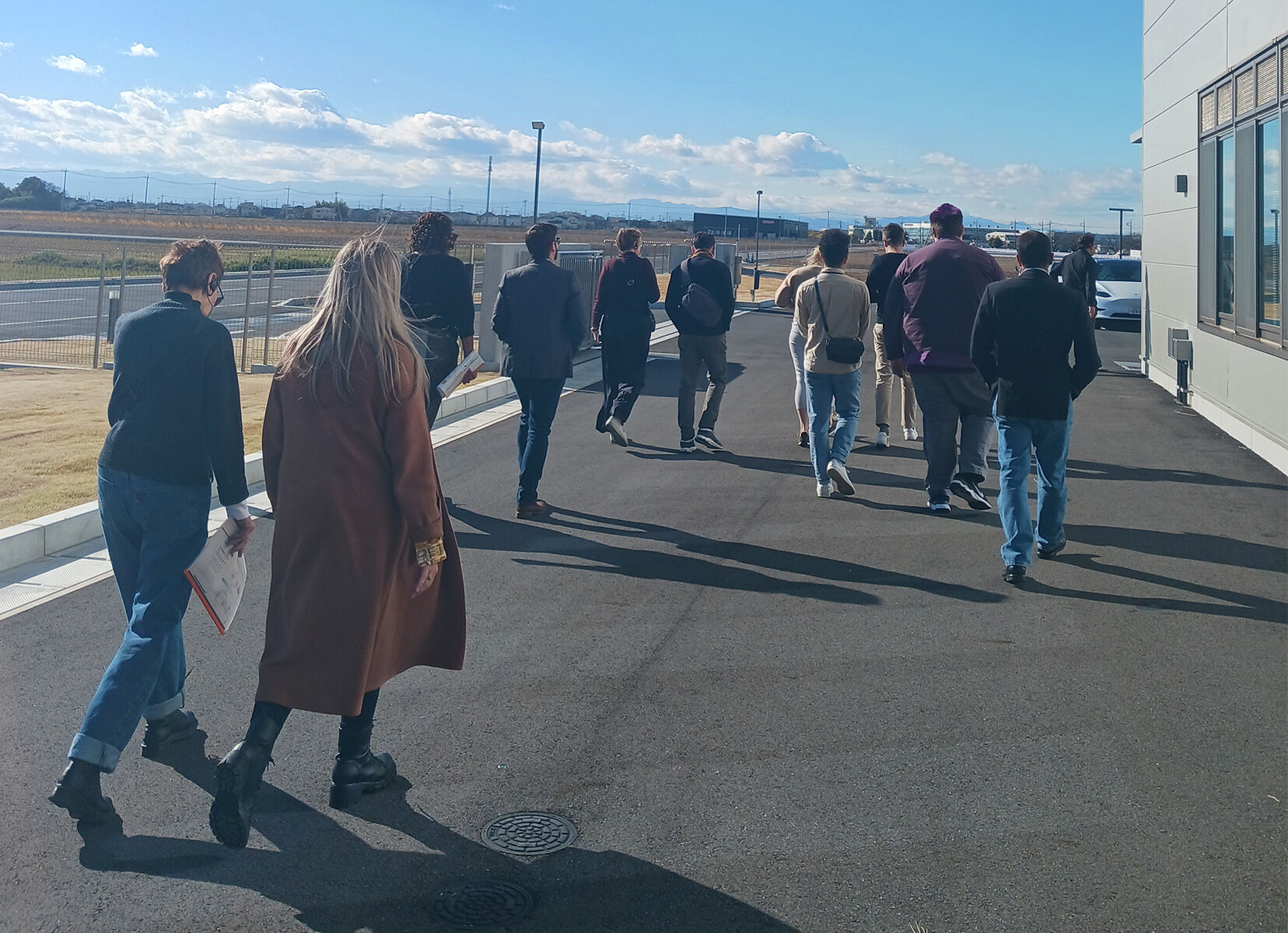Sustainable Manufacture and Processing
A hundred and fifty years ago, Japan’s silk industry began production in the small rural town of Tomioka in Gunma prefecture, to the northwest of Tokyo. Today, much of Gunma is in Tokyo’s extended commuter belt, but interspersed with the Shinkansen high-speed line, commuter trains and typical Japanese communities where the world’s largest metropolis gives way to countryside — and just fifty kilometres away from the UNESCO-listed Tomioka Silk Mill — a brand new factory is the new home to the production of a substantial part of the animal-free fabrics for airline seats and cabins.

The new Chiyoda plant, which your author visited as part of a tour of the factory around the RedCabin summit in Tokyo, was so newly opened that the traditional Japanese floral arrangements presented to the company were still lining the entryway when we arrived.
From the outside, it’s a modern Japanese light industrial building that somehow looks compact and modest but offers substantial space within: all the better to move many of the processes in creating the polyurethane leather from its component elements to this new and more sustainable space. Indeed, it was striking, behind the fascinating processes of making the fabrics, that the construction of the new factory included a strong drive to sustainability, both in terms of the factory itself and in terms of the processes that it contains.

On the factory side, the plant features an underground geothermal heat pump system for heating the building in Japan’s freezing winters and cooling it during the roasting summers. There’s a hydrogen boiler for heat, one of the first at this scale of factory in Japan, reducing the factory’s reliance on fossil fuels and the electricity network at peak load times. Also included are solar panels that alone provide between a third and two thirds of the power needed, depending on the weather, plus on-site batteries that let the. factory store up power in sunny times or even pull-down power from the grid during the overnight low-demand period to store for use in the peak daytimes.
The on-site water treatment system may sound unglamorous but is fascinating. Not until you observe the processes themselves do you understand how much water is used in the creation of these animal-free leather fabrics, so being able to both clean the water to a level where it can be reused and then eventually discharge it back into the environment without negative impact is very impressive.
Also striking during the visit was how everything in the building had its place, and how there was nothing unnecessary, a key element in sustainable production and consumption. At several points your author thought back to the experience of watching a Japanese airport in operation: the ground vehicles on each stand are lined up just so in the painted bays dedicated to their use, while the ground staff make just the right amount of haste to get their jobs done swiftly and efficiently.

Re-use was strong, as well: seating in the visitor area was covered with samples of the fabrics produced there, while one of the friendly staff members conducting the visit had produced charming little keepsake pins, buttons and hair ties featuring small fabric segment offcuts.
So was the local identity of the environment in which the plant sits, with the meeting rooms named for local mountains. And, as elsewhere in Japan, every different kind of consumer waste recycling was split out into individually marked bins for collection. As ever with sustainability, it’s the mindset that matters, and it was clear that it’s not just the sustainability of this plant that’s an advantage here: it’s the focus of the people who spend their working lives there.

